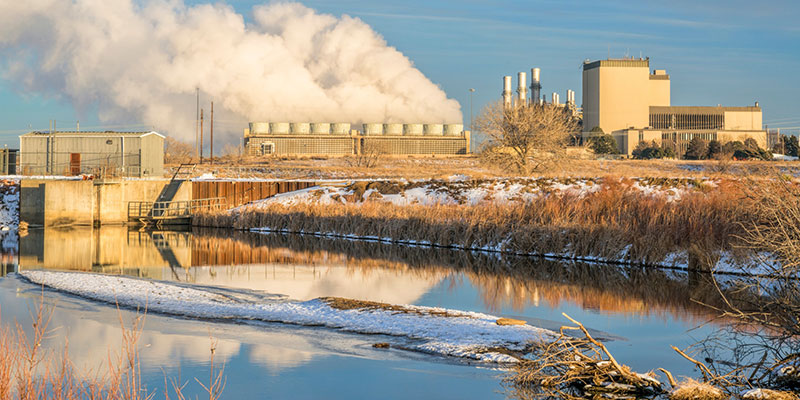Secret Methods in Industrial Waste Water Therapy Processes
The therapy of industrial wastewater is an essential aspect of environmental administration, involving a variety of strategies designed to reduce the effect of contaminants. Improvements in modern technologies such as membrane layer purification and advanced oxidation processes provide ingenious remedies for enhancing treatment effectiveness.
Physical Therapy Approaches
Just how properly can physical treatment techniques attend to the intricacies of commercial wastewater? Physical therapy approaches play a critical function in the preliminary stages of wastewater administration, concentrating mostly on the elimination of solids and big particulates. Strategies such as sedimentation, flotation protection, and purification are necessary for lowering the focus of suspended solids, thus improving the effectiveness of subsequent therapy procedures.
Sedimentation involves the gravitational settling of solids, enabling for the separation of larger products from the wastewater. This method is specifically efficient in making clear water prior to chemical or organic treatments.
Furthermore, flotation protection methods, which utilize air bubbles to raise suspended solids to the surface area for removal, work in treating wastewater with high concentrations of fats, oils, and oils. In general, physical therapy techniques function as an important very first step in the comprehensive management of industrial wastewater, ensuring that the tons on succeeding treatment stages is decreased and enhancing overall treatment efficiency.
Chemical Treatment Methods
While physical treatment approaches lay the foundation for effective wastewater management, chemical treatment strategies are crucial for attending to the more complex pollutants commonly found in commercial effluents. These techniques utilize various chemical representatives to precipitate, counteract, or oxidize damaging substances, ensuring a much more comprehensive elimination of pollutants.
One common approach is coagulation and flocculation, where chemical coagulants such as light weight aluminum sulfate or ferric chloride are added to promote the gathering of put on hold fragments. This procedure boosts solid-liquid splitting up, reducing turbidity and boosting water quality. In addition, neutralization processes are utilized to readjust the pH of wastewater, using bases or acids to neutralize acidic or alkaline streams, specifically.
Oxidation-reduction responses play an essential function in degrading organic impurities and pathogens. Chemical oxidants like hydrogen, chlorine, or ozone peroxide are used to damage down complex organic compounds, making them much less harmful or a lot more biodegradable. Progressed oxidation procedures (AOPs) integrate several oxidation methods to improve toxin elimination performance.
Biological Therapy Procedures
The effectiveness of wastewater treatment is significantly enhanced by biological treatment procedures, which harness the natural metabolic activities of bacteria to break down natural issue and eliminate contaminants. Industrial Waste Water Treatment. These procedures mainly entail cardiovascular and anaerobic digestion, each customized for specific sorts of wastewater
Aerobic therapy processes utilize oxygen to sustain microbial development, promoting the malfunction of organic toxins right into carbon dioxide and water. Typical methods include activated sludge systems, where oygenation containers promote the blending of wastewater with bacteria, and trickling filters, which encourage biofilm growth on media surfaces.
Alternatively, anaerobic therapy processes occur in the absence of oxygen, using anaerobic bacteria to decay natural matter, leading to biogas manufacturing, a sustainable energy resource. Anaerobic digesters are typically used in commercial settings for this objective, successfully decreasing the quantity of sludge while producing important biogas.
The selection of an organic treatment technique relies on wastewater features, therapy objectives, and regulatory requirements. The integration of organic processes in wastewater therapy not just improves toxin removal efficiency however additionally promotes sustainability by lessening chemical usage and sustaining source healing.
Advanced Oxidation Processes

Typical AOP techniques include Fenton's reagent, photocatalysis, and ozonation. Fenton's reagent, a mix of hydrogen peroxide and ferrous iron, militarizes the development of hydroxyl radicals, making it efficient for dealing with wastewater having phenolic compounds and other recalcitrant substances.
AOPs provide a number of benefits, consisting of decreased sludge production and the capability to deal with wastewater with high focus of natural toxins. The implementation of AOPs calls for careful consideration of operational parameters and cost-effectiveness, guaranteeing that these sophisticated strategies are suitably integrated right into existing wastewater treatment systems.
Membrane Layer Filtering Technologies

Microfiltration works for eliminating suspended solids and microorganisms, while ultrafiltration targets smaller sized natural molecules and infections. Nanofiltration links the void in between ultrafiltration and turn around osmosis, successfully look at this now removing divalent ions and organic compounds. Reverse osmosis supplies the highest possible degree of purification, used mainly for desalination and eliminating mono-valent ions.
Membrane layer innovations use many benefits, consisting of reduced energy usage compared to conventional treatment techniques, modular style for scalability, and the potential for water healing and reuse. Obstacles such as membrane fouling and the need for regular maintenance have to be resolved to make sure system efficiency. Generally, membrane purification technologies represent a crucial element of contemporary industrial wastewater therapy methods, promoting sustainability and resource preservation in water monitoring.
Final Thought
Finally, industrial wastewater therapy uses a diverse array of strategies, consisting of physical, chemical, biological, and advanced methods. Each approach plays a crucial function in properly resolving different contaminants, boosting water high quality, and promoting resource sustainability. The assimilation of these methods fosters a thorough therapy method, making sure that commercial effluents meet governing requirements while minimizing environmental impact. Proceeded advancements in these techniques will additionally enhance the efficiency and efficiency of wastewater treatment processes in commercial settings.
The treatment of commercial wastewater is an essential element of ecological monitoring, view it entailing a variety of strategies developed to mitigate the impact of contaminants.How effectively can physical therapy techniques next attend to the complexities of industrial wastewater?Advanced oxidation procedures (AOPs) stand for a sophisticated technique in commercial wastewater therapy, made to properly weaken organic toxins that are usually resistant to traditional treatment techniques (Industrial Waste Water Treatment).In conclusion, industrial wastewater treatment utilizes a diverse range of strategies, consisting of physical, chemical, organic, and progressed methods. Continued developments in these methodologies will better improve the effectiveness and effectiveness of wastewater treatment procedures in industrial setups